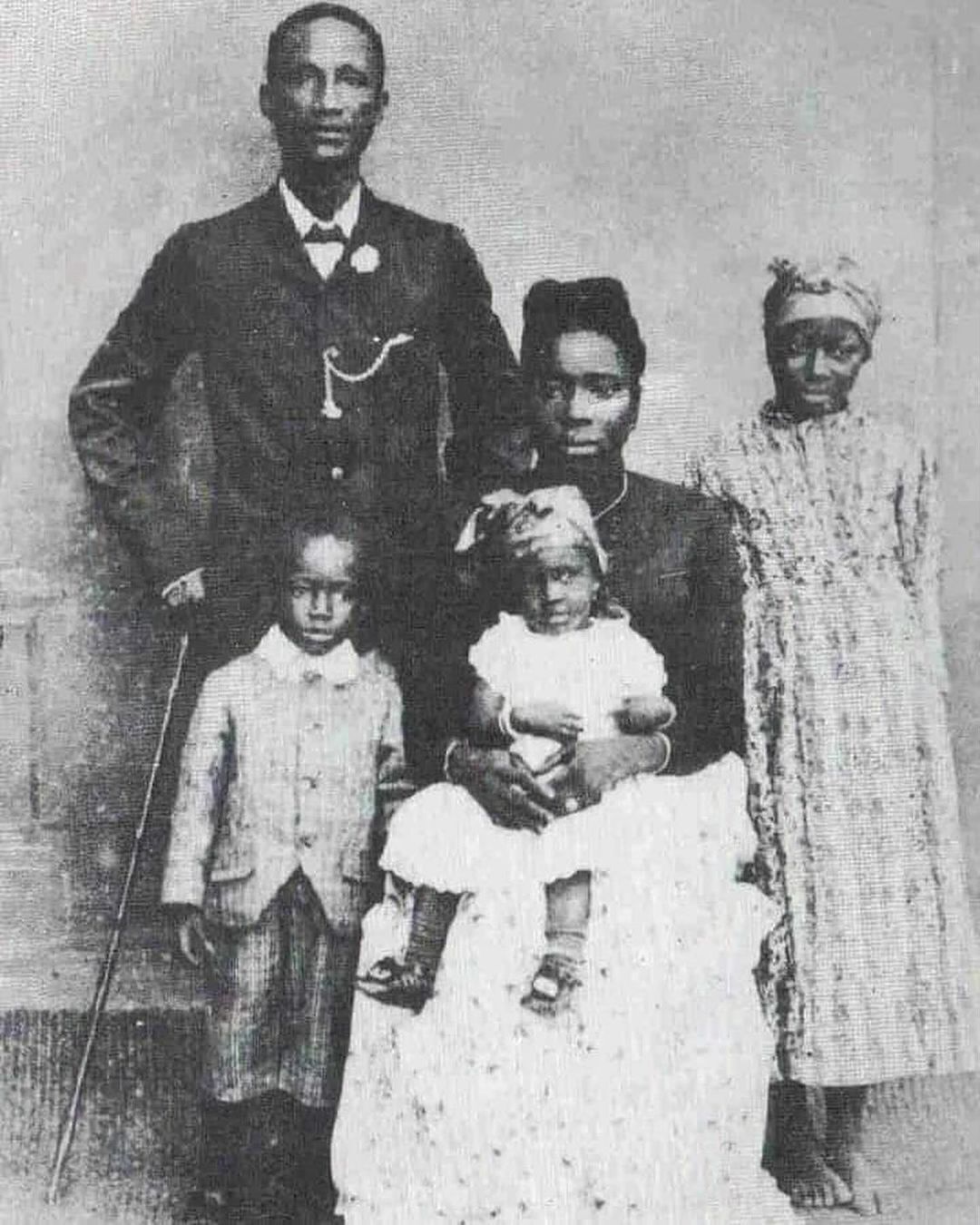The fascinating and colorful history of the Afro-Brazilian Returnees, also referred to as “AGUDA” or “AMARO,” is an inspiring tale of tenacity and cultural blending. The Amaros, also known as Agudas, are the offspring of liberated Afro-Brazilian slaves who emigrated from Brazil to Benin, Togo, and Nigeria. Caption for photo: An emotive 1890 family portrait of the “AGUDAS,” or Afro-Brazilian Returnees. The rich history and enduring legacy of a society that crossed borders and cultures are shown in this picture. Including a photo caption on the slide: An elegant portrait of female Afro-Brazilian returnees, known as “AGUDA,” from the late 1800s. Many freed Africans who had experienced prejudice and forced labor in Brazil started returning to Lagos in the 1830s, bringing with them certain cultural and social sensibilities that they had adjusted to during their time there. These freed Africans, who also included exiles from Cuba, were frequently referred to as “Aguda” or “Amaro.” Less than 200 Brazilian citizens are currently on file with the Nigerian consulate. Many prisoners of war or those kidnapped for sale in slave markets were sold to Europeans and carried across the Atlantic during the height of the West African Transatlantic Slave Trade. About 300,000 slaves are thought to have traveled from the Gulf of Guinea to Brazil during the nineteenth century.
After disembarking in Bahia, the prisoners continued south to labor on plantations, help craftsmen, or peddle items to white BraziliansWaves of African migration returned to the coast of West Africa evolved as some received manumission, saved money, or were deported due to prejudice. Afro-Brazilians, descended from slaves who had crossed the Atlantic twice, started to settle along the coast of West Africa by the middle of the nineteenth century. Afro-Brazilian tastes in food, agriculture, architecture, and religion were revived by these African immigrants. Following the Yoruba and Hausa rebellion in Salvador known as the Malê Revolt, the government ordered the first documented repatriation of Africans from Brazil to what is now Nigeria in 1835. Following the uprising, the Brazilian government gave released or manumitted Africans the choice to either go back home or continuepaying a hefty fee to the government out of fear of more uprisings. Due to harsh conditions, taxes, racism, and homesickness, a small number of free and quite well-off Africans were able to return home. Sixty-one Mina Africans pooled $4,000 in 1851 to hire a ship for Badagry.

Following the abolition of slavery in Brazil and Cuba in 1886 and 1888, respectively, more people began to migrate to Lagos. Numerous individuals made the decision to go back to Nigeria due to cultural, missionary, and financial factors. A large number of them were Yoruba by descent. They were assigned Popo Aguda’s marshy area in Lagos as their habitation. They made up roughly 9% of Lagos’s population by the 1880s. By late 1920, the exodus had ceased. Even though coastal Lagos was the desired location, the majority of those returning were descended from interior tribes like the Ijeshas, Oyos, Ijebu, and Egba. Although the Agudas were aware of their hometowns, they chose to establish themselves in Lagos due to the city’s favorable trading environment, the friendly welcome they experienced in Badagry, and the ongoing conflicts in the interior. In Badagry, when a ship carrying Agudas docked, the children would greet and applaud them as they got off the ship, but in the hinterlands, outsiders were looked down upon. The Oba of Lagos occasionally granted them land on which to erect a home as well as personnel to help them adjust to local life. Lagos was distinct from Bahia despite this. While many of the children were new to Lagos, the older returnees were at ease.
They created a close-knit community on Lagos Island and preserved aspects of Bahia culture, including as Catholicism. Indigenous Africans referred to them as “black whites,” or Agudas, because they continued to practice Catholicism and dress in Western fashion. Determined to amass fortune in Africa, some of the first Agudas—such as the descendants of Francisco Felix de Sousa and Domingo Martinez—had conflicting moral views on matters like slavery and went on to become slave traffickers. Agudas settled in the eastern regions of Lagos on land given to them by Oba Idowu Ojulari after arriving from Bahia and Pernambuco. This area was designated as the Brazilian quarters in 1852 (later dubbed Popo Aguda). Metropolitan Lagos at this time reflected the racial and cultural traits of the metropolis. Native Lagosians inhabited the Northwestern parts of the island, Europeans resided and traded along the long stretch of the Marina, and the Saros inhabited Olowogbowo, a parcel of land on the western cornerof Lagos Island. The core of the Brazilian sector was Campos Square, named for Cuban returnee Hilario Campos, while the westernmost corner of the Brazilian quarters reached the easternmost parts of Olowogbowo at Tinubu Square.
Two other important thoroughfares are Bamgbose and Tokunboh. There were indications of diasporic sensibilities inside the quarters, no indications of ethnic categorization within the community, and a degree of flexibility in the residents’ religious practices. In addition to being a hub for import distribution, Popo Aguda was a commercial hub. Today, the Onipopo, the chief of the group, is in charge of the different memorial rituals held in the quarters. In Ago Egba, the Egba colony in Lagos, which is situated on the mainland near Ebute Metta, there is also a sister community of Brazilians.

